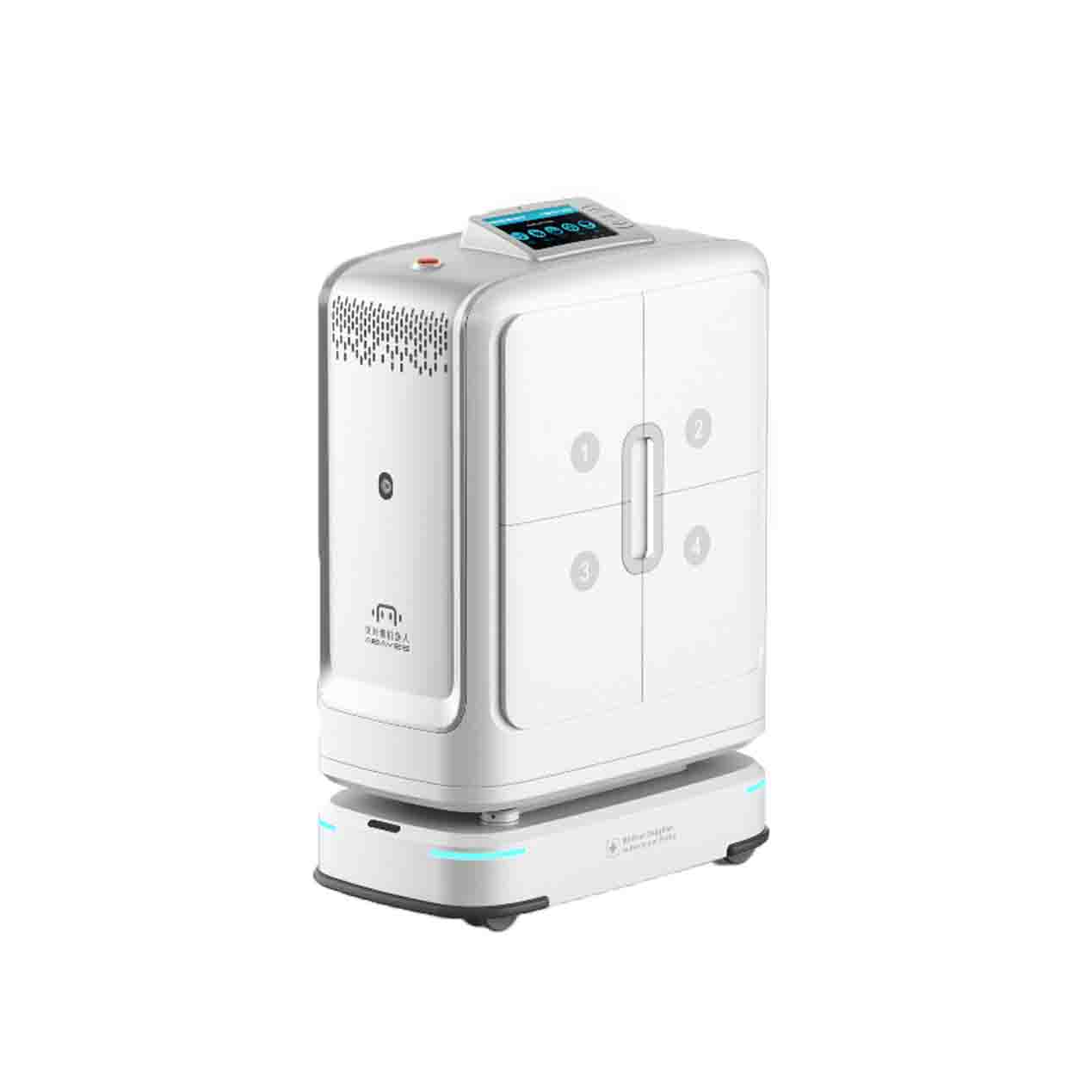- Home
- Capability
- Products
- About Us
- Service Industry
- Service Cases
- Video
- Contact Us
-
Language

2024-07-27 15:53:35
Medical logistics robots are transforming the healthcare industry by enhancing efficiency and accuracy in the movement and management of medical supplies, medications, and equipment within healthcare facilities. These robots are integral to improving operational workflows and patient care. Central to their effectiveness is their housing, which protects the robot's internal components, ensures safety, and supports functionality. This article provides an overview of medical logistics robots and highlights the importance of their housing.

1. Introduction to Medical Logistics Robots
Medical logistics robots are specialized machines designed to automate the transportation of medical items within hospitals, clinics, and other healthcare settings. Their primary functions include:
Transporting Supplies: Robots move medical supplies, medications, and equipment between different areas of a facility, reducing the need for manual handling and minimizing human error.
Inventory Management: Some robots are equipped with advanced sensors and systems for tracking inventory levels, ensuring that essential supplies are always available.
Enhanced Efficiency: By automating routine tasks, medical logistics robots help healthcare professionals focus on patient care rather than logistical tasks, improving overall operational efficiency.
2. Key Components of Medical Logistics Robots
Medical logistics robots typically consist of several key components:
Mobility System: This includes wheels or tracks that enable the robot to navigate through the facility. Advanced navigation systems, such as LIDAR or camera-based sensors, allow the robot to move autonomously and avoid obstacles.
Payload Area: The section where medical items are stored during transport. This area needs to be designed to securely hold and protect sensitive materials.
Control System: Includes the robot's onboard computer and software that manage its operations, including navigation, communication, and task execution.
Power Supply: Batteries or other power sources that ensure the robot can operate continuously or for extended periods without frequent recharging.
3. Importance of Robot Housing
The housing of a medical logistics robot serves several critical functions:
Protection: It shields the robot's internal components from physical damage, dust, and contaminants. This is particularly important in medical environments where cleanliness and equipment integrity are paramount.
Safety: Housing is designed to ensure the robot operates safely around staff and patients. It includes safety features such as emergency stop buttons and collision sensors to prevent accidents.
Durability: The housing material must withstand the demands of a healthcare environment, including frequent cleaning and potential exposure to harsh substances.
4. Design Considerations for Housing
Several factors must be considered in the design of Medical Logistics Robot Housing:
Material Selection: The choice of materials impacts durability, weight, and ease of cleaning. Common materials include high-grade plastics, metals, and composites, each offering different benefits.
Ergonomics: Housing design should allow for easy access to maintenance points and control interfaces. Ergonomic design ensures that the robot can be easily serviced and operated.
Thermal Management: Effective housing design must include ventilation or cooling systems to manage the heat generated by the robot’s electronics and motors.
5. Hygiene and Sterilization
In healthcare settings, maintaining hygiene is crucial:
Cleaning Compatibility: Housing materials should be compatible with cleaning agents used in medical environments. Smooth, non-porous surfaces are preferred as they are easier to disinfect.
Design Features: The design should minimize crevices and joints where contaminants can accumulate. Removable panels or covers may facilitate thorough cleaning.
6. Integration with Medical Facilities
Effective integration with the facility’s infrastructure is essential:
Space Management: The housing must be designed to fit within the facility’s existing layout and accommodate various environmental constraints.
Communication Systems: Integration with facility management systems and other automated equipment enhances the robot’s functionality and coordination.
7. Customization and Adaptability
Customizable housing allows robots to meet specific needs:
Modular Design: Modular components can be customized for different tasks or environments, offering flexibility in deployment.
Adaptable Features: Features such as adjustable shelves or compartments can be tailored to handle different types of medical items.
8. Regulatory and Compliance Requirements
Medical logistics robots must comply with various standards:
Safety Standards: Compliance with safety standards ensures the housing protects both the robot and the facility’s occupants.
Material Regulations: Materials used in the housing must meet regulations for environmental and health safety.
9. Future Trends and Innovations
Advancements in robotics and materials science are driving innovation in Medical Logistics Robot Housing:
Smart Materials: Development of smart materials that can adapt to environmental conditions or provide real-time feedback.
Advanced Sensors: Integration of more sophisticated sensors and communication technologies for improved performance and safety.
10. Conclusion
Medical logistics robots are a vital component of modern healthcare facilities, streamlining operations and enhancing patient care. The housing of these robots is crucial in protecting their internal components, ensuring safety, and supporting operational efficiency. By focusing on robust design, materials, and integration, healthcare facilities can maximize the benefits of these advanced robotic systems and contribute to a more efficient and effective healthcare environment.